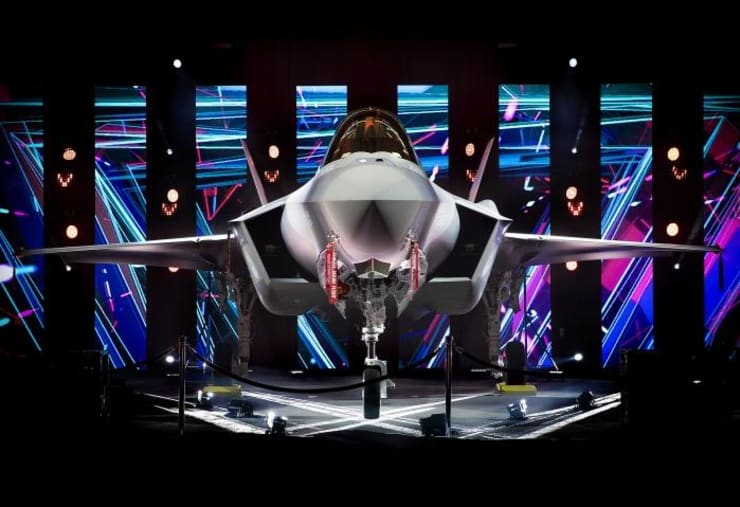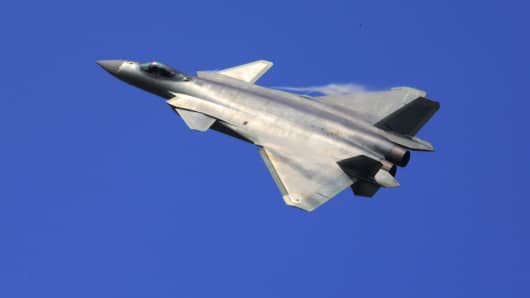By Steven Erlanger



Li Keqiang, center, with Donald Tusk, the European Council president, left, and Jean-Claude Juncker, the European Commission president, on Tuesday in Brussels.
BRUSSELS — The European Union, which does more than 1.5 billion euros a day in two-way trade with China, came late to the industrial, political and security threats China poses.
BRUSSELS — The European Union, which does more than 1.5 billion euros a day in two-way trade with China, came late to the industrial, political and security threats China poses.
For a long time, Europe saw China as another Japan, only with some human-rights issues.
But with the outspoken ambitions of the Chinese leader, Xi Jinping, and continuing battles over technology transfer, closed markets and industrial espionage, that is changing.
On Tuesday, the European Union and China met in Brussels for their 21st annual summit.
But with the outspoken ambitions of the Chinese leader, Xi Jinping, and continuing battles over technology transfer, closed markets and industrial espionage, that is changing.
On Tuesday, the European Union and China met in Brussels for their 21st annual summit.
The challenge for Europe is to forge a united front in the face of a China that only last month it labeled an “economic competitor” in critical industrial fields and a “systemic rival” politically.
The mood is certainly tougher now, especially after Italy last month became the first Group of 7 country to join China’s vast Belt and Road project, which the French analyst François Heisbourg described as “China’s own concept on how to organize the global space.”
In difficult negotiations, the Europeans had a hard time finding agreement on a joint statement with the Chinese that is serious about substance.
The mood is certainly tougher now, especially after Italy last month became the first Group of 7 country to join China’s vast Belt and Road project, which the French analyst François Heisbourg described as “China’s own concept on how to organize the global space.”
In difficult negotiations, the Europeans had a hard time finding agreement on a joint statement with the Chinese that is serious about substance.
They succeeded up to a point, but the commitments made by China are more about further talks than specific actions.
Donald Tusk, the European Council president, pointed to China’s agreement to discuss reform of the World Trade Organization’s rules on industrial subsidies, which he termed a “breakthrough.”
But Jean-Claude Juncker, who leads the bloc’s bureaucracy as president of the European Commission, said tartly that “progress is slower than we like.’’
The Europeans did succeed, by threatening not to sign a joint statement, in getting a promise to conclude a long-discussed bilateral investment deal by the end of 2020, which would improve market access, and a "promise" to limit forced technology transfers.

The port of Trieste, Italy, could benefit from a new economic accord between Italy and China.
But a senior European official also pointed to a statement finally reached after the last summit, in Beijing in July, which was full of promises not delivered, especially on issues like investment ground rules and market reciprocity, which are sources of tension now.
If anything, there has been backsliding and more vivid violations of human rights, like the detention of foreigners and the settlement camps for Uighurs.
If China is now a “systemic rival,” the joint statement did not reflect that new view, but tried to preserve a sense of partnership, said Theresa Fallon, director of the Centre for Russia Europe Asia Studies in Brussels.
Last month, President Emmanuel Macron of France said that the European Union had finally woken up to China.
Donald Tusk, the European Council president, pointed to China’s agreement to discuss reform of the World Trade Organization’s rules on industrial subsidies, which he termed a “breakthrough.”
But Jean-Claude Juncker, who leads the bloc’s bureaucracy as president of the European Commission, said tartly that “progress is slower than we like.’’
The Europeans did succeed, by threatening not to sign a joint statement, in getting a promise to conclude a long-discussed bilateral investment deal by the end of 2020, which would improve market access, and a "promise" to limit forced technology transfers.

The port of Trieste, Italy, could benefit from a new economic accord between Italy and China.
But a senior European official also pointed to a statement finally reached after the last summit, in Beijing in July, which was full of promises not delivered, especially on issues like investment ground rules and market reciprocity, which are sources of tension now.
If anything, there has been backsliding and more vivid violations of human rights, like the detention of foreigners and the settlement camps for Uighurs.
If China is now a “systemic rival,” the joint statement did not reflect that new view, but tried to preserve a sense of partnership, said Theresa Fallon, director of the Centre for Russia Europe Asia Studies in Brussels.
Last month, President Emmanuel Macron of France said that the European Union had finally woken up to China.
“China plays on our divisions,” he said.
“The period of European naïveté is over.”
But the bloc was slow to respond to Belt and Road, just as it was slow to react to China’s effort in 2012 to sow divisions on the Continent with its “16 plus 1” initiative — itself and 16 Central and Eastern European nations.

Prime Minister Giuseppe Conte of Italy and Xi Jinping in Rome last month. Italy has become the first Group of 7 country to sign on to China’s Belt and Road infrastructure project.
They are to hold their own meeting starting Thursday in Croatia, and Li will go there as well.
But the bloc was slow to respond to Belt and Road, just as it was slow to react to China’s effort in 2012 to sow divisions on the Continent with its “16 plus 1” initiative — itself and 16 Central and Eastern European nations.

Prime Minister Giuseppe Conte of Italy and Xi Jinping in Rome last month. Italy has become the first Group of 7 country to sign on to China’s Belt and Road infrastructure project.
They are to hold their own meeting starting Thursday in Croatia, and Li will go there as well.
At the end of the month, many European Union member states will also go to Beijing for a Belt and Road forum.
The 16 plus 1 group contains 11 European Union member states, five of which use the euro, and four of which are formal candidates for membership in the bloc.
The 16 plus 1 group contains 11 European Union member states, five of which use the euro, and four of which are formal candidates for membership in the bloc.
And Greece is reported to be looking to join.
All have been eager for Chinese investment, which carries fewer demands, if higher risks, than Western banks or development funds.
All have been eager for Chinese investment, which carries fewer demands, if higher risks, than Western banks or development funds.
And already countries with significant financial ties to China, like Greece and Italy, have blocked European consensus on resolutions condemning Chinese behavior.
“China will attempt to use every opportunity, including the E.U.-China Summit, and the 16 plus 1 meeting in Croatia, to pit Europeans against each other and against the United States,’’ said Jamie Fly, the director of the Asia and Future of Geopolitics Programs for the German Marshall Fund in Washington.
‘‘It would be foolish and shortsighted to take the bait,” he added.
Avoiding that may not be easy.
“China will attempt to use every opportunity, including the E.U.-China Summit, and the 16 plus 1 meeting in Croatia, to pit Europeans against each other and against the United States,’’ said Jamie Fly, the director of the Asia and Future of Geopolitics Programs for the German Marshall Fund in Washington.
‘‘It would be foolish and shortsighted to take the bait,” he added.
Avoiding that may not be easy.
Trump sees the European Union as an economic “foe.”
On Tuesday, Trump threatened an additional $11 billion in tariffs in response to European subsidies to Airbus.
“The EU has taken advantage of the U.S. on trade for many years. It will soon stop!’’ Trump tweeted.

Donald J. Trump
✔@realDonaldTrump
The World Trade Organization finds that the European Union subsidies to Airbus has adversely impacted the United States, which will now put Tariffs on $11 Billion of EU products! The EU has taken advantage of the U.S. on trade for many years. It will soon stop!
China, on the other hand, works hard, despite recent conflicts, to be attractive to European businesses, both for investment and trade.

Donald J. Trump
✔@realDonaldTrump
The World Trade Organization finds that the European Union subsidies to Airbus has adversely impacted the United States, which will now put Tariffs on $11 Billion of EU products! The EU has taken advantage of the U.S. on trade for many years. It will soon stop!
China, on the other hand, works hard, despite recent conflicts, to be attractive to European businesses, both for investment and trade.
“China uses honey while the U.S. is using vinegar,” said Mr. Heisbourg, the French analyst.
“The U.S. is pushing Europe in China’s direction.”
China also emphasizes its agreement with Europe on issues Trump has opposed.
China also emphasizes its agreement with Europe on issues Trump has opposed.
Those include climate change, as well as commitment to the Iran nuclear deal, which Trump has abandoned.
The relationship is crucial for both Brussels and Beijing, and the honey is difficult to resist.
The relationship is crucial for both Brussels and Beijing, and the honey is difficult to resist.
The European Union is China’s biggest trading partner, and China is the bloc’s second-biggest after the United States.

Trucks at Trieste’s port this month. The northeast Italian city could become a terminus for Chinese goods shipped through the Suez Canal.
Ivan Hodac, the former head of the European Automobile Manufacturers’ Association, which has major interests in China, says the new European wariness is coming late.
“The E.U. is divided,” Mr. Hodac said.
Ivan Hodac, the former head of the European Automobile Manufacturers’ Association, which has major interests in China, says the new European wariness is coming late.
“The E.U. is divided,” Mr. Hodac said.
“Each country has its own financial interest. So long as there is no free trade agreement or investment deal with China,” he said, Europe is vulnerable.
“And the Americans need to understand we are really in it together.”
Washington and Brussels share similar goals with China.
Washington and Brussels share similar goals with China.
But Trump has favored trying to reach his own deals with China while also, the Europeans argue, undermining the W.T.O., whose rules China has at least "promised" to obey.
There are also new security concerns, with the United States warning allies away from Huawei, the large Chinese telecommunications company, as the world moves to 5G wireless networks.
With defense and industry increasingly dependent on 5G and artificial intelligence, areas where China is innovating and investing heavily, Washington and other allies, like Germany and France, see dangers.
Yet Huawei is cheaper than its competitors, attractive to smaller countries and central European ones, and there is no large American alternative.
Nor is there a European Union version of the Committee on Foreign Investment in the United States, or Cfius, an interagency group that carefully screens Chinese and other foreign investments to protect national security.
There are also new security concerns, with the United States warning allies away from Huawei, the large Chinese telecommunications company, as the world moves to 5G wireless networks.
With defense and industry increasingly dependent on 5G and artificial intelligence, areas where China is innovating and investing heavily, Washington and other allies, like Germany and France, see dangers.
Yet Huawei is cheaper than its competitors, attractive to smaller countries and central European ones, and there is no large American alternative.
Nor is there a European Union version of the Committee on Foreign Investment in the United States, or Cfius, an interagency group that carefully screens Chinese and other foreign investments to protect national security.
There is a new investment screening mechanism by Brussels, but it has no enforcement framework.



